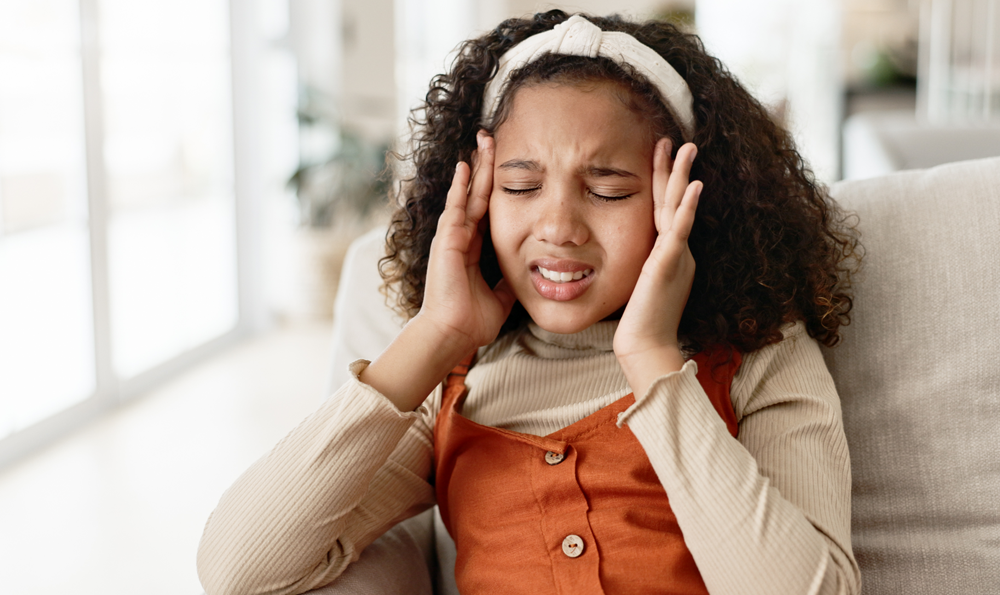Headaches are a common childhood complaint. But for some kids and teens, what they’re experiencing isn’t just a headache—it’s a migraine. And according to Atlantic Health pediatric neurologist Shannon Babineau, MD, it’s genetic and often seems to increase as children get older.
“About two to three percent of young children experience migraines, with boys most affected in the younger years,” she says. “But by adolescence—with hormone shifts from puberty—that number rises slightly for boys and sharply for girls, affecting up to 20 percent of adolescent-age girls, which is one in five.”
The difference between migraines and headaches
While most people think of a migraine as a bad headache, Dr. Babineau explains it’s a far more complex neurologic condition.
“A migraine is typically moderate to severe in intensity, with throbbing or pulsating pain that can last anywhere from a few hours to a few days, if left untreated,” she says. “Migraines often forces a child to stop what they’re doing, rest, or even sleep. It’s not something they can just ‘push through.’”
A migraine is often accompanied by other symptoms, too, which can include:
- Nausea and vomiting
- Dizziness
- Aura (flashing lights, temporary vision loss)
- Numbness
- Sensitivity to light and sound
There’s also a connection between migraines and stomach distress, particularly in young children.
“In younger kids, gastrointestinal symptoms are part of the migraine spectrum,” says Dr. Babineau. “The gut has many of the same neurotransmitters as the brain. This means children can experience abdominal migraines or cyclic vomiting syndrome before their head pain begins.”
Causes and triggers
So, what brings on a migraine in children? According to Dr. Babineau, the root cause is largely genetic.
“Many families can trace a history of severe headaches to someone in their family,” says Dr. Babineau. “Even if a parent or grandparent ‘outgrew’ their migraines, it’s common to see them reappear in the next generation.”
She also explains that environmental and lifestyle factors play a role in triggering an attack. These can include:
- Poor sleep
- Skipped meals
- Dehydration
- Stress or emotional strain (both positive and negative)
- Hormonal changes (especially in adolescent girls)
- Food sensitivities
- Environmental triggers
When to see a doctor
Any time a headache becomes disruptive and causes missed school, activities or requiring rest, it’s worth talking with your pediatrician—and keeping a migraine diary to track patterns and triggers.
Chronic migraine is when a child has 15 or more headache days in a month, with eight of those episodes being severe enough to meet migraine criteria.
“Your pediatrician can diagnose and manage most migraine cases,” says Dr. Babineau. “But if your child’s headaches aren’t responding to treatment or there are unusual symptoms like weakness or vision changes, that’s when a pediatric neurologist can help with further evaluation.”
Learning to manage migraine symptoms
Although there’s no cure for migraines, many children do outgrow them, and others learn to successfully manage them through a combination of medication, lifestyle adjustments and general awareness.
“Migraines are very manageable,” says Dr. Babineau. “Improving sleep, managing stress and eating regularly can help keep migraines at bay for many children—and these are healthy habits overall. In a way, migraines teach kids to listen to their bodies so they mature into adulthood with better tools and coping skills to live well.”












